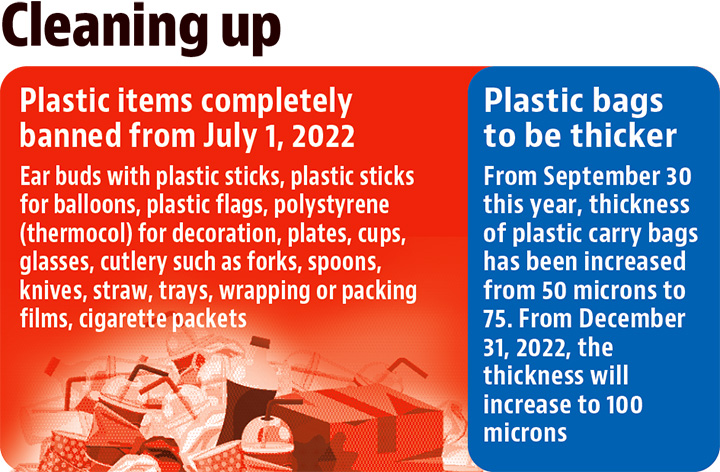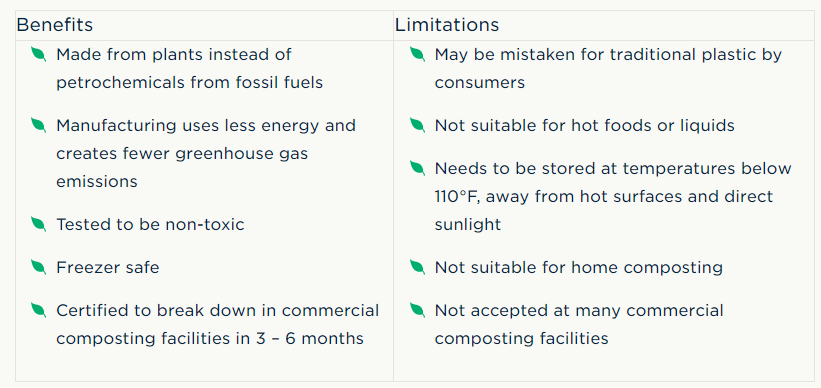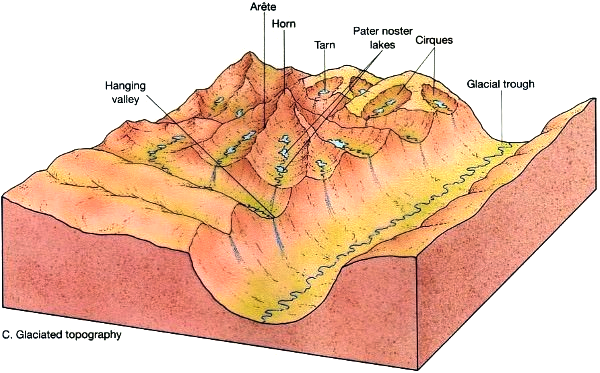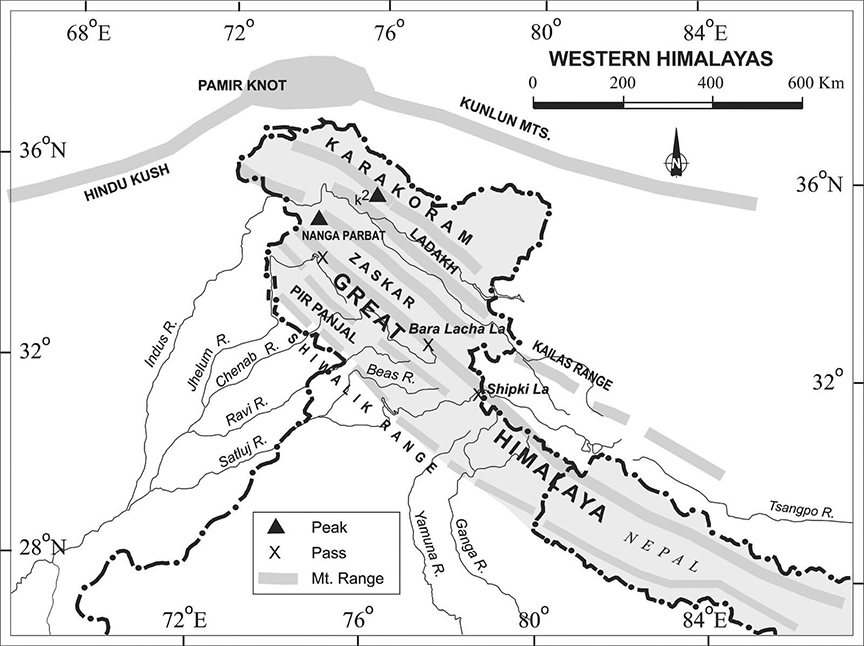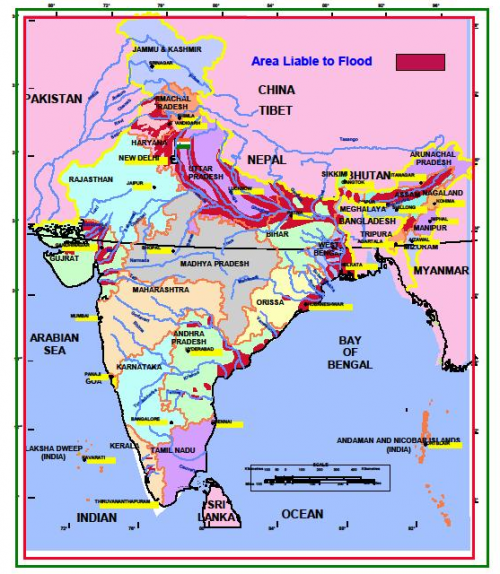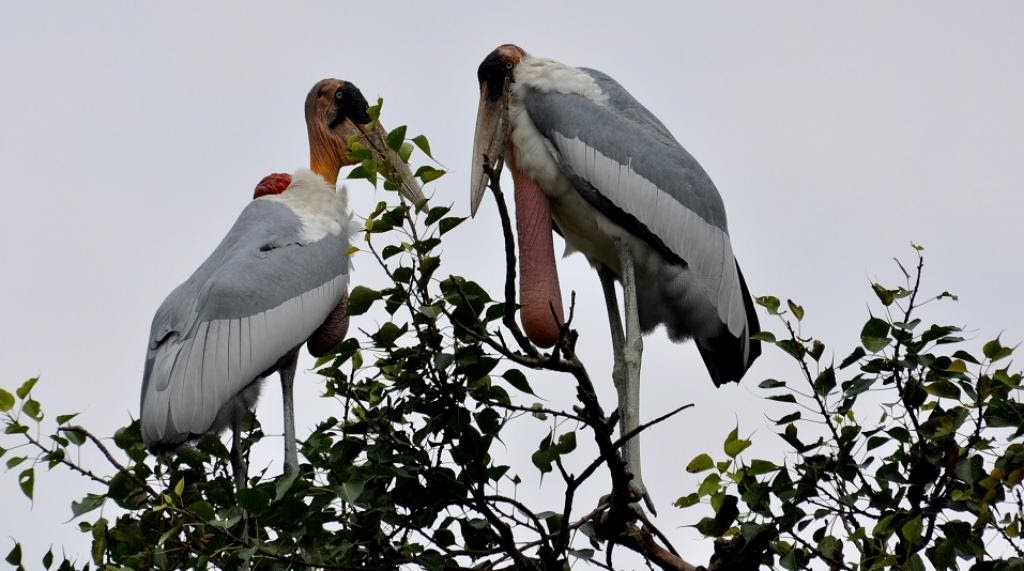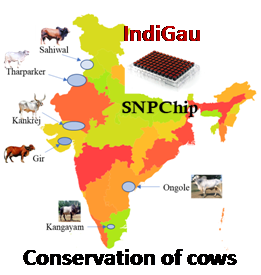Governance
Vehicle Scrapping Policy Launched
Why in News
Recently, the Prime Minister while addressing the Investor Summit in Gujarat via video conferencing launched the Vehicle Scrapping Policy/National Automobile Scrappage Policy.
- The Summit will invite investment for setting up vehicle scrapping infrastructure under the Vehicle Scrapping Policy.
- The Vehicle Scrapping Policy was announced in March 2021 by the government.
- The policy is estimated to cover 51 lakh Light Motor Vehicles (LMVs) that are above 20 years of age and another 34 lakh LMVs above 15 years of age.
Key Points
- Aim:
- Reducing the population of old and defective vehicles, bringing down vehicular air pollutants, improving road and vehicular safety.
- Provisions:
- Fitness Test:
- Old vehicles will have to pass a fitness test before re-registration and as per the policy government commercial vehicles more than 15 years old and private vehicles which are over 20 years old will be scrapped.
- Old vehicles will be tested at authorized Automated Fitness Center and will not be scrapped merely on the basis of age.
- Emission test, braking system, safety components will be tested and the vehicles which fail in the fitness test will be scrapped.
- If the old vehicle passes the test, the owner can continue to use it, but the charges for reregistration will be much steeper.
- The Union Road and Transport Ministry has also issued rules for registration procedure for scrapping facilities, their powers, and scrapping procedure to be followed.
- Road Tax Rebate:
- The state governments may be advised to offer a road-tax rebate of up to 25% for personal vehicles and up to 15% for commercial vehicles to provide incentive to owners of old vehicles to scrap old and unfit vehicles.
- Vehicle Discount:
- Vehicle manufacturers will also give a discount of 5% to people who will produce the 'Scrapping Certificate' and registration fees will be waived off on the purchase of a new vehicle.
- Disincentive:
- As a disincentive, increased re-registration fees would be applicable for vehicles 15 years or older from the initial date registration.
- Fitness Test:
- Significance:
- Creation of Scrap yards:
- It will lead to creation of more scrap yards in the country and effective recovery of waste from old vehicles.
- India had to import 23,000 crore worth of scrap steel during the last year as India’s scrapping is not productive and India is not able to recover energy and rare earth metals.
- Employment:
- In the new fitness centers, 35 thousand people will get employment and an investment of Rs 10,000 crores will be pumped in.
- Improved Revenue:
- This will boost sales of heavy and medium commercial vehicles that had been in the contraction zone as a result of economic slowdown triggered by the bankruptcy of IL&FS (Infrastructure Leasing & Financial Services) and Covid-19 pandemic.
- The government treasury is expected to get around Rs 30,000 to 40,000 crores of money through Goods and Services Tax (GST) from this policy.
- Reduction in Prices:
- Prices of auto components would fall substantially with the recycling of metal and plastic parts.
- As scrapped materials will get cheaper the production cost of the vehicle manufacturers will also reduce.
- Reduce Pollution:
- It will play a major role in modernising the vehicular population as it will help in phasing out the unfit and polluting vehicles across the country and promote a circular economy and waste to wealth campaign.
- As older vehicles pollute the environment 10 to 12 times more, and estimated that 17 lakh medium and heavy commercial vehicles are more than 15 years old.
- Creation of Scrap yards:
- Other Initiatives to Curb Vehicular Pollution:
Biodiversity & Environment
Ban on Single-Use Plastic
Why in News
Recently, the Ministry Of Environment Forest And Climate Change has notified the Plastic Waste Management Amendment Rules, 2021.
- These rules prohibit specific single-use plastic items which have “low utility and high littering potential” by 2022.
Key Points
- About:
- New Rules:
- The manufacture, import, stocking, distribution, sale and use of the identified single-use plastic will be prohibited with effect from the 1st July, 2022.
- The ban will not apply to commodities made of compostable plastic.
- For banning other plastic commodities in the future, other than those that have been listed in this notification, the government has given industry ten years from the date of notification for compliance.
- The permitted thickness of the plastic bags, currently 50 microns, will be increased to 75 microns from 30th September, 2021, and to 120 microns from the 31st December, 2022.
- Plastic bags with higher thickness are more easily handled as waste and have higher recyclability.
- Legal Framework for Banning Plastic: Currently, the Plastic Waste Management Rules, 2016, prohibits manufacture, import, stocking, distribution, sale and use of carry bags and plastic sheets less than 50 microns in thickness in the country.
- Plastic Waste Management Amendment Rules, 2021 amend the 2016 rules.
- Implementing Agency: The Central Pollution Control Board, along with state pollution bodies, will monitor the ban, identify violations, and impose penalties already prescribed under the Environmental Protection Act, 1986.
- New Rules:
- Compostable Plastics:
- Instead of using plastic made from petrochemicals and fossil fuels, compostable plastics are derived from renewable materials like corn, potato, and tapioca starches, cellulose, soy protein, and lactic acid.
- These are non-toxic and decompose back into carbon dioxide, water, and biomass when composted.
- Single Use Plastics and Reasons for the Ban:
- Single-use plastics, or disposable plastics, are used only once before they are thrown away or recycled.
- Plastic is so cheap and convenient that it has replaced all other materials from the packaging industry but it takes hundreds of years to disintegrate.
- If we look at the data, out of 9.46 million tonnes of plastic waste generated every year in our country, 43% is single use plastic.
- Further, Petroleum-based plastic is non biodegradable and usually goes into a landfill where it is buried or it gets into the water and finds its way into the ocean.
- In the process of breaking down, it releases toxic chemicals (additives that were used to shape and harden the plastic) which make their way into our food and water supply.
- Pollution due to single use plastic items has become an important environmental challenge confronting all countries and India is committed to take action for mitigation of pollution caused by littered Single Use Plastics.
- At the 4th United Nations Environment Assembly in 2019, India piloted a resolution on addressing single-use plastic products pollution.
- The Prime Minister of India was also conferred the “champions of the earth” award by the United Nations Environment Programme (UNEP) in 2018 for pledging to eliminate all single-use plastic by 2022.
Initiatives to Curb Plastic Waste
Way Forward
- Sustainable Alternatives: Economically affordable and ecologically viable alternatives which will not burden the resources needed and their prices will also come down with time and increase in demand.
- Need to promote alternatives like cotton, khadi bags and biodegradable plastics.
- More R&D (Research & Development) and finances for it, are needed to look for sustainably viable options.
- Circular Economy: Countries must embrace circular and sustainable economic practices throughout the plastics value chain to reduce plastic pollution.
- A circular economy depends on reuse, sharing, repair, refurbishment, remanufacturing and recycling of resources to create a closed-loop system, minimising the use of resources, generation of waste, pollution and carbon emissions.
- Behavioural Change: Citizens have to bring behavioural change and contribute by not littering and helping in waste segregation and waste management.
- Extended Producer Responsibility: At the policy level, the concept of Extended Producer Responsibility (EPR), already mentioned under the 2016 Rules, has to be promoted.
- EPR is a policy approach under which producers are given a significant responsibility – financial and/or physical – for the treatment or disposal of post-consumer products.
Biodiversity & Environment
Four New Ramsar Sites: India’s Wetlands
Why in News
Recently, four more Indian sites - two each from Haryana and Gujarat - have been recognised as wetlands of international importance under the Ramsar Convention.
- Further, according to recent estimates by Wetlands International South Asia, nearly 30% of the natural wetlands in India have been lost in the last three decades. Majorly, the loss of Wetlands is more prominent in Urban areas.
- Wetlands International South Asia was established in 1996, with an office in New Delhi, as a part of Wetlands International network to promote conservation and sustainable development of wetlands in the South Asia region.
Key Points
- About Wetlands:
- Wetlands are ecosystems saturated with water, either seasonally or permanently.
- They include mangroves, marshes, rivers, lakes, deltas, floodplains and flooded forests, rice-fields, coral reefs, marine areas no deeper than 6 metres at low tide, as well as human-made wetlands such as waste-water treatment ponds and reservoirs.
- Though they cover only around 6% of the Earth’s land surface, 40% of all plant and animal species live or breed in wetlands.
New Ramsar Sites
- Recently, the Ramsar Convention has designated four new wetlands in India, as wetlands of global importance. It is an international treaty for the conservation and wise use of wetlands.
- Bhindawas Wildlife Sanctuary, the largest wetland in Haryana is a human-made freshwater wetland.
- Sultanpur National Park from Haryana supports more than 220 species of resident, winter migratory and local migratory waterbirds at critical stages of their life cycles.
- Thol Lake Wildlife Sanctuary in Gujarat lies on the Central Asian Flyway and more than 320 bird species can be found here.
- Wadhwana Wetland from Gujarat is internationally important for its birdlife as it provides wintering ground to migratory waterbirds, including over 80 species that migrate on the Central Asian Flyway.
- These wetlands are home to endangered bird species like Egyptian Vulture, Saker Falcon, Sociable Lapwing, and the near threatened Dalmatian Pelican.
- With this, the number of Ramsar sites in India are 46.
- Role of Urban Wetlands:
- Historical Importance: The value of wetlands, especially in urban settings, is evidenced through our history.
- In southern India, the cholas, the Hoysalas built tanks all over the state.
- Multi-layered Role: Wetlands not only support high concentrations of biodiversity, but also offer a wide range of important resources and ecosystem services like food, water, fiber, groundwater recharge, water purification, flood moderation, storm protection, erosion control, carbon storage and climate regulation.
- Liquid Assets of Cities: They serve as special attributes contributing to the cultural heritage, and have deep connections with a city’s ethos.
- The value of wetlands in securing local livelihoods through activities such as fishing, farming and tourism, is incomparable.
- Historical Importance: The value of wetlands, especially in urban settings, is evidenced through our history.
Major Threats to Wetlands:
| Urbanization |
|
| Anthropogenic activities |
|
| Agricultural activities |
|
| Hydrologic activities |
|
| Deforestation |
|
| Pollution |
|
| Salinization |
|
| Aquaculture |
|
| Introduced species |
|
| Climate change |
|
- Issues in Wetland Conservation:
- Major regulatory bodies like the Central Wetland Regulatory Authority had limited impact as they only have advisory powers.
- Additionally, existing laws ignore the participation of local communities in governing and monitoring wetlands.
- Further, cities are unable to cater to the water demand due to a policy vacuum as there is no well-defined ‘National Urban Water Policy’ to guide urban water management.
- In addition to urbanisation needs, lack of awareness and knowledge on wetlands and their ecosystem services can be blamed for this widespread loss.
Global Wetland Conservation Initiatives
- The Ramsar convention
- Montreux Record
- World Wetland Day
- Cities4Forests global campaign: It works closely with cities around the world to connect with forests, emphasizes the importance of wetlands and their multiple benefits to help combat climate change and protect biodiversity in cities.
Conservation Efforts by India
- National Plan for Conservation of Aquatic Ecosystems (NPCA)
- Wetlands (Conservation and Management) Rules, 2017
- ISRO carried out the National Wetland Inventory and Assessment using remote sensing satellites from 2006 to 2011 and mapped around two lakh wetlands in India.
Way Forward
- Developing Synergy With Mega Urban Schemes: The ecosystem services of wetlands need to be highlighted in our development policies, urban planning and climate change mitigation.
- In this context, mega urban schemes like Smart Cities Mission and Atal Mission for Rejuvenation and Urban Transformation need to add the aspects of sustainable management of wetlands.
- Enabling People’s Participation: The Delhi Development Authority invited public comments on Master Plan Delhi 2041 to protect and develop an integrated network of ‘green and blue assets’ of Delhi to maintain the biodiversity and microclimate of the capital.
- The ‘green-blue policy’, refers to where water bodies and land are interdependent, growing with the help of each other, while offering environmental and social benefits.
- Similarly, Swamini’ self-help group of ten women have been organising ‘mangrove safari’ for tourists in the Mandavi creek in Maharashtra since 2017. This has been recognised as a model for community-led conservation through ecotourism.
- The multiple benefits and services provided by wetlands are essential to achieve the ambitious agenda for building resilient cities to achieve our sustainable development goals, while accommodating further development and eradicating poverty.
Geography
Retreat of Glaciers in Ladakh
Why in News
According to a recent study by the Wadia Institute of Himalayan Geology (WIHG), the Pensilungpa Glacier located in Ladakh’s Zanskar Valley is retreating due to increase in temperature and decrease in precipitation during winters.
- This study assesses the impact of climate change on glaciers. Earlier, the UNDP (United Nations Development Programme) also assessed that the Hindu Kush Himalayan (HKH) mountain ranges could lose up to two-third of its ice by 2100.
- WIHG is an autonomous body under the Department of Science and Technology located in Dehradun, Uttarakhand.
Key Points
- Findings:
- Rate of Decline:
- The glacier is now retreating at an average rate of 6.7 plus/minus 3 metre per annum.
- Glaciers may retreat when their ice melts more quickly than snowfall can accumulate and form new glacial ice.
- Debris Cover:
- There is a significant influence of debris cover on the mass balance and retreat of the glacier's endpoint, especially in summer.
- Furthermore, the mass balance data for the three years (2016–2019) showed a negative trend with a small accumulation area ratio.
- Mass balance of the glacier is the difference between the snow accumulated in the winter and the snow and ice melted over the summer.
- There is a significant influence of debris cover on the mass balance and retreat of the glacier's endpoint, especially in summer.
- Impact of rise in the Air Temperature:
- Due to continuous rise in the air temperature in line with the global trend, the melting would increase, and it is possible that the precipitation of summer periods at higher altitudes will change from snow to rain, and that may influence the summer and winter pattern.
- Rate of Decline:
- Impact:
- Impact on Human Life:
- It will impact the water, food, energy security and agriculture, including soil loss due to soil erosion, landslides and floods.
- Glacial lakes may also form due to the accumulation of melted ice, which may result in Glacial Lake Outburst Floods (GLOF) and even shifting global climate by dumping freshwater into the oceans and so altering their circulation.
- Leaves Debris:
- Glacial retreat leaves boulders and masses of scraped-together rocky debris and soil called glacial moraines.
- Impact on Human Life:
- Initiative for Himalayan Ecosystem:
- National Mission for Sustaining the Himalayan Ecosystem: It is one of the 8 national missions under the National Action Plan on Climate Change (NAPCC).
Glacier
- About:
- It is a large, perennial accumulation of crystalline ice, snow, rock, sediment, and water that originates on land and moves down slope under the influence of its own weight and gravity. They are sensitive indicators of changing climate.
- Out of total water on Earth, 2.1% is in glaciers while 97.2% is in the oceans and inland seas.
- Condition of glacier formation:
- Mean annual temperatures are close to the freezing point.
- Winter precipitation produces significant accumulations of snow.
- Temperatures throughout the rest of the year do not result in the complete loss of the previous winter’s snow accumulation.
- Glacial Landforms:
Zanskar Valley
- It is a semi-arid region situated in the northern flank of the Great Himalayas at an altitude of more than 13 thousand feet.
- The Zanskar Range separates Zanskar from Ladakh and the average height of the Zanskar Range is about 6,000 m.
- This mountain range acts as a climatic barrier protecting Ladakh and Zanskar from most of the monsoon, resulting in a pleasantly warm and dry climate in the summer.
- Marbal Pass, Zojila Pass in the extreme northwest of Zanskar range are two notable passes in the region.
- Many rivers start in different branches of this range flow northward, and join the great Indus River. These rivers include Hanle River, Khurna River, Zanskar River, Suru River (Indus), and Shingo River.
- The Zanskar river then takes a north-eastern course until it joins the Indus in Ladakh.
Geography
India Needs an Updated Flood Map
Why in News
Recent occurrences of heavy rainfall leading to flooding across India have shown that flood-prone areas in the country go beyond those mentioned in the central monitoring map.
- The shift in the flooding patterns and frequencies demands an updated map of flood-prone areas, factoring in the impacts of climate change.
Flood Prone Areas According to NDMA
Key Points
- Flood Prone Areas in India:
- Regions susceptible to floods, according to the National Disaster Management Authority (NDMA), lie mostly along the Ganga-Brahmaputra river basin, from the northern states of Himachal Pradesh and Punjab, covering Uttar Pradesh and Bihar and stretching to Assam and Arunachal Pradesh in the northeast.
- The coastal states of Odisha and Andhra Pradesh, parts of Telangana and Gujarat also witness yearly floods.
- Need of a New Map:
- Old Estimation:
- The current demarcation is based on estimates made in 1980 by Rashtriya Barh Ayog (RBA) or National Flood Commission formed four decades ago.
- National Flood Commission, was set up by the Ministry of Agriculture and Irrigation in 1976, to study India’s flood-control measures after the projects launched under the National Flood Control Programme of 1954 failed to achieve much success.
- Around 40 million hectares of the geographical area in India is vulnerable to floods, according to the RBA.
- RBA also ascribed the floods to purely anthropogenic factors and not heavy downpours.
- The current demarcation is based on estimates made in 1980 by Rashtriya Barh Ayog (RBA) or National Flood Commission formed four decades ago.
- Climate Change:
- Over the last four decades, India has been reeling from the effects of climate change. The global rise in temperatures has led to large periods of no rain followed by extreme precipitation.
- Extreme rainfall events have tripled in central India between 1950 and 2015, according to the science journal Nature.
- There will be a rise in the frequency of floods in India due to rising temperatures between 2070 and 2100, according to Climate Change and India, a report by the Union Ministry of Environment and Forest.
- Increased Downpour:
- In recent times, the southwest monsoon period has also been causing massing floods in parts of the country in recent years.
- In 2020, 256 districts across 13 states in India reported floods due to excess rainfall.
- Old Estimation:
Flood
- It is an overflowing of water onto land that is normally dry. Floods can happen during heavy rains, when ocean waves come on shore, when snow melts quickly, or when dams or levees break.
- Damaging flooding may happen with only a few inches of water, or it may cover a house to the rooftop. Floods can occur within minutes or over a long period, and may last days, weeks, or longer. Floods are the most common and widespread of all weather-related natural disasters.
- Flash floods are the most dangerous kind of floods, because they combine the destructive power of a flood with incredible speed.
- Flash floods occur when heavy rainfall exceeds the ability of the ground to absorb it.
- They also occur when water fills normally dry creeks or streams or enough water accumulates for streams to overtop their banks, causing rapid rises of water in a short amount of time.
- They can happen within minutes of the causative rainfall, limiting the time available to warn and protect the public.
National Disaster Management Authority
- About:
- It.is the apex statutory body for disaster management in India. It was formally constituted in September 2006, in accordance with the Disaster Management Act, 2005 with the Prime Minister as its Chairperson and nine other members, and one such member to be designated as Vice-Chairperson.
- Mandate:
- To coordinate response to natural or man-made disasters and for capacity-building in disaster resiliency and crisis response.
- It is also the apex body to lay down policies, plans and guidelines for Disaster Management to ensure timely and effective response to disasters.
- Vision:
- To build a safer and disaster resilient India by a holistic, proactive, technology driven and sustainable development strategy that involves all stakeholders and fosters a culture of prevention, preparedness and mitigation.
Indian Economy
Atmanirbhar Narishakti Se Samvad
Why in News
Recently, Prime Minister (PM) of India participated in ‘Atmanirbhar Narishakti se Samvad’ and interacted with women Self Help Group (SHG) members promoted under the Deendayal Antyodaya Yojana-National Rural Livelihoods Mission (DAY-NRLM).
Key Points
- Highlights of the Conference:
- The PM lauded the Self-Help Groups of women for their unprecedented services during the Covid-19 period.
- For example, women’s unparalleled contribution in making masks and sanitizers and providing food to the needy and spreading awareness.
- The PM released support funds to SHGs, for PM Formalisation of Micro Food Processing Enterprises (PM FME) Scheme and for Farmer Producer Organizations (FPOs).
- The PM also announced that now the limit for loans available to SHGs without guarantee has been doubled to Rs 20 lakh.
- In the pursuit of making the country free from single use plastic, SHGs can play an important role.
- SHGs can raise awareness about single use plastic and work for its alternative.
- In this context, SHGs can take full advantage of the online Government e-marketplace.
- The PM lauded the Self-Help Groups of women for their unprecedented services during the Covid-19 period.
- About Self-Help Groups (SHGs):
- SHGs are informal associations of people who choose to come together to find ways to improve their living conditions.
- It can be defined as a self governed, peer controlled information group of people with similar socio-economic background and having a desire to collectively perform common purpose.
- Villages face numerous problems related to poverty, illiteracy, lack of skills, lack of formal credit etc. These problems cannot be tackled at an individual level and need collective efforts.
- Thus SHG can become a vehicle of change for the poor and marginalized. SHG relies on the notion of “Self Help” to encourage self-employment and poverty alleviation.
- In 1999, Government of India, introduced Swarn Jayanti Gram Swarozgar Yojana (SGSY) to promote self-employment in rural areas through formation and skilling of SHGs. The programme evolved as a national movement in 2011 and became National Rural Livelihoods Mission (NRLM).
- Other Initiatives to Promote SHGs:
- Agriculture Infrastructure Fund
- PM Formalization of Micro Food Processing Enterprises (PM FME) Scheme
- Pradhan Mantri Matsya Sampada Yojana (PMMSY)
- Ambedkar Hastshilp Vikas Yojana (AHVY)
- North East Rural Livelihood Project
- Scheme for promotion of Women SHGs (WSHGs) in backwards & LWE (Left Wing Extremism) districts of India.
- The Ministry of Housing & Urban Affairs has launched ‘SonChiraiya’ – (A brand and logo)- for marketing of urban SHG products. It also implements DAY-NULM (National Urban Livelihoods Mission).
- Government Initiatives for Women Empowerment in Various Fields:
- Agriculture and Agro-Based Industry:
- Under the new farm laws, women self help groups have no restriction on how much they can store.
- Self help groups have the option whether to sell produce directly from the farm or by setting up a food processing unit and sell with great packaging.
- Financial Inclusion:
- Jan Dhan Accounts: With more than 42 crore Jan Dhan accounts of which close to 55% of the accounts are of women.
- DAY-NRLM: It envisages universal social mobilization by inter alia organising one-woman members from each rural poor household into Self Help Groups (SHGs).
- Panchayats:
- In Education:
- In Entrepreneurship:
- Mahila e-haat
- Women Entrepreneurship Platform (WEP)
- Support to Training and Employment Programme for Women (STEP) Scheme
- New Labour Code
- The Prevention of Sexual Harassment At Workplace Act, 2013
- Other Initiatives:
- Agriculture and Agro-Based Industry:
Social Justice
International Youth Day, 2021
Why in News
Every year, International Youth Day is observed on 12th August to recognise and bring attention to the problems faced by the youth.
- National Youth Day is held every year on 12th January to observe the birth anniversary of Swami Vivekananda.
Key Points
- History:
- In 1999, the United Nations decided to commemorate International Youth Day every year on this day.
- It was based on a recommendation made by the World Conference of Ministers Responsible for Youth in Lisbon to the UN General Assembly.
- The first International Youth Day was observed on 12th August, 2000.
- Theme for 2021:
- Transforming Food Systems: Youth Innovation for Human and Planetary Health.
- Challenges in Realising Youth Potential:
- Lack of Education and Skill: India’s underfunded education system is inadequately equipped to provide the skills young people need to take advantage of emerging employment opportunities.
- According to the World Bank, public expenditure on education constituted only 3.4% of GDP in 2020.
- Impact of the Pandemic: Various studies show that school closures have a serious impact on the learning, lives and mental well-being of children.
- A survey by the International Labour Organization (ILO) reveals that 65% of adolescents worldwide reported having learnt less during the pandemic.
- Issues of Young Women: Child marriage, gender-based violence, their vulnerability to abuse and trafficking, especially if primary caregivers fall ill or die. All these issues restrict young women to achieve their full potential.
- Jobless Growth: The main contributor in India’s GDP is the service sector which is not labour intensive and thus adds to jobless growth.
- Further about 50% of India's population is still dependent on agriculture which is notorious for underemployment and disguised unemployment.
- Low Social Capital: Further high levels of hunger, malnutrition, stunting among children, high levels of anaemia among adolescent girls, poor sanitation etc., have reduced the productivity of India’s youth in realising their potential.
- Lack of Education and Skill: India’s underfunded education system is inadequately equipped to provide the skills young people need to take advantage of emerging employment opportunities.
- India’s Initiatives:
- National Youth Policy-2014 provides a holistic Vision for the youth of India which is “to empower the youth of the country to achieve their full potential, and through them enable India to find its rightful place in the community of nations”.
- For Employment:
- For Skill Development:
- For Social Issues:
- For Health and Nutrition:
- Global Initiatives:
Way Forward
- With a young population of 365 million (30%), India’s demographic dividend – the economic advantage of a large working-age population – is enormous.
- India must ensure a healthy young population by making efforts to improve access to adolescent-friendly healthcare facilities, gainful employment and nutrition as a critical step to achieving the Sustainable Development Goals.
Important Facts For Prelims
Greater Adjutant Storks (Garuda)
Why in News
Recently, Bihar has decided to tag greater adjutant storks locally known as ‘Garuda’ with GPS trackers to monitor their movement as part of efforts to conserve them.
Key Points
- Scientific Name: Leptoptilos dubius
- Genus:
- The greater adjutant is a member of the stork family, Ciconiidae.
- There are about 20 species in the family.
- They are long-necked large birds.
- The greater adjutant is a member of the stork family, Ciconiidae.
- Habitat:
- Once found across South and Southeast Asia, the Greater Adjutant is one of the most threatened stork species in the world.
- There are only three known breeding grounds – one in Cambodia and two in India (Assam and Bihar).
- Threat:
- The widespread destruction and degradation of the wetlands that this scavenger bird needs to forage (i.e. search for food) and the loss of its nesting trees, led to a decline.
- Protection Status:
- IUCN Red List: Endangered
- Wildlife (Protection) Act 1972: Schedule IV
- Significance:
- Religious Icon:
- They are considered the mount of Vishnu, one of Hinduism’s prime deities.
- Some worship the bird and call it “Garuda Maharaj” (Lord Garuda) or “Guru Garuda” (Great Teacher Garuda).
- Helpful for Farmers:
- They help farmers by killing rats and other farm pests.
- Religious Icon:
Important Facts For Prelims
IndiGau
Why in News
Recently, National Institute of Animal Biotechnology (NIAB), Hyderabad has launched a chip called IndiGau.
- It is India’s first Cattle Genomic Chip for the conservation of pure varieties of indigenous cattle breeds like Gir, Kankrej, Sahiwal, Ongole etc.
- NIAB is an Indian autonomous research establishment of the Department of Biotechnology, Ministry of Science and Technology.
Key Points
- About IndiGau:
- IndiGau is purely indigenous and the largest cattle chip of the world.
- The Chip to achieve the goal of conservation of our own breeds with better characters and help towards doubling of farmers’ income by 2022.
- The manufacturing of this chip is in synergy with Rashtriya Gokul Mission and a great example of Atmanirbhar Bharat.
- Further, the chip exemplifies the application of scientific knowledge and innovations for “Ease of Living” for all sections of society.
- Importance of Indigenious Breeds:
- Indigenous bovines are robust and resilient and are particularly suited to the climate and environment of their respective breeding tracts and productivity of indigenous breeds is less likely to be impacted by the adversities of climate change.
- The milk of indigenous animals is high in fat and SNF content.
- SNF content are the substances in milk other than butterfat and water in the form of casein, lactose, vitamins, and minerals which contribute significantly to the nutritive value of milk.
Important Facts For Prelims
Ballistic Missile Ghaznavi: Pakistan
Why in News
Recently, Pakistan has successfully test-fired a nuclear-capable surface-to-surface ballistic missile ‘Ghaznavi’.
- It is capable of delivering multiple types of warheads up to a range of 290 kilometres.
- Earlier, Shaheen-3, Babur cruise missile and the Fatah-1 were launched.
Key Points
- Ballistic Missile:
- It is a rocket-propelled self-guided strategic-weapons system that follows a ballistic trajectory to deliver a payload from its launch site to a predetermined target.
- It can carry conventional high explosives as well as chemical, biological, or nuclear munitions.
- The International Code of Conduct against Ballistic Missile Proliferation (ICOC), now known as the Hague Code of Conduct against Ballistic Missile Proliferation (HCOC), is a political initiative aimed at globally curbing ballistic missile proliferation.
- India is a signatory to this convention.
- Established in April 1987, the voluntary Missile Technology Control Regime (MTCR) aims to limit the spread of ballistic missiles and other unmanned delivery systems that could be used for chemical, biological, and nuclear attacks.
- India has joined the MTCR.
- Some of India's Ballistic Missiles:
- Agni P missile
- Shaurya missile
- Prithvi missile
- Dhanush, etc.


